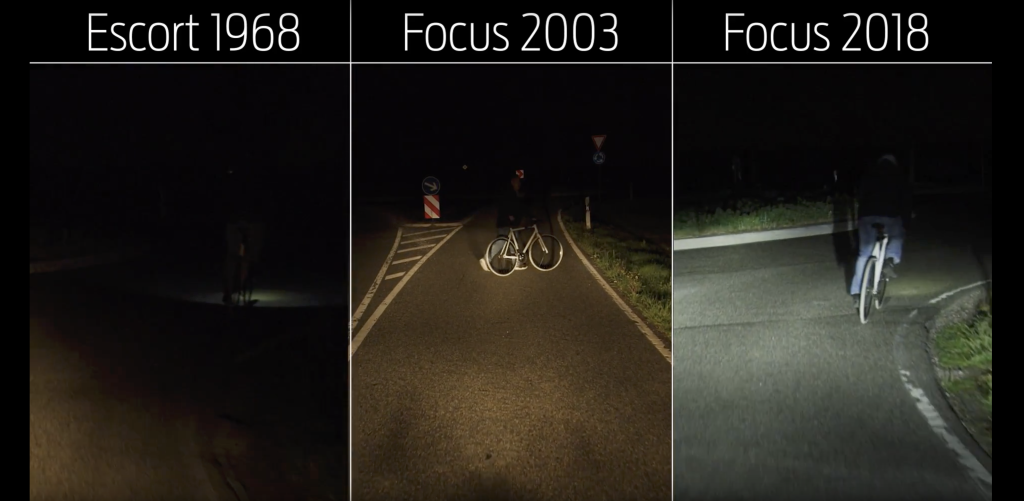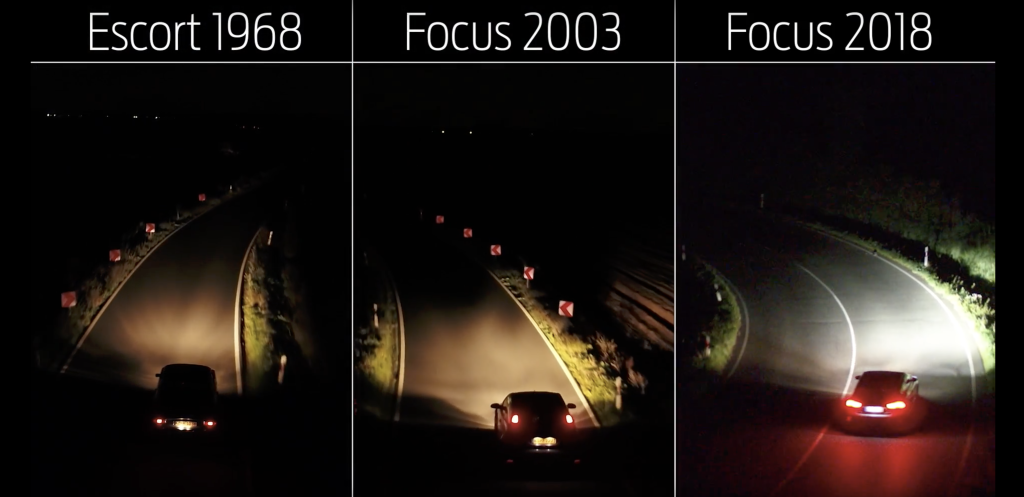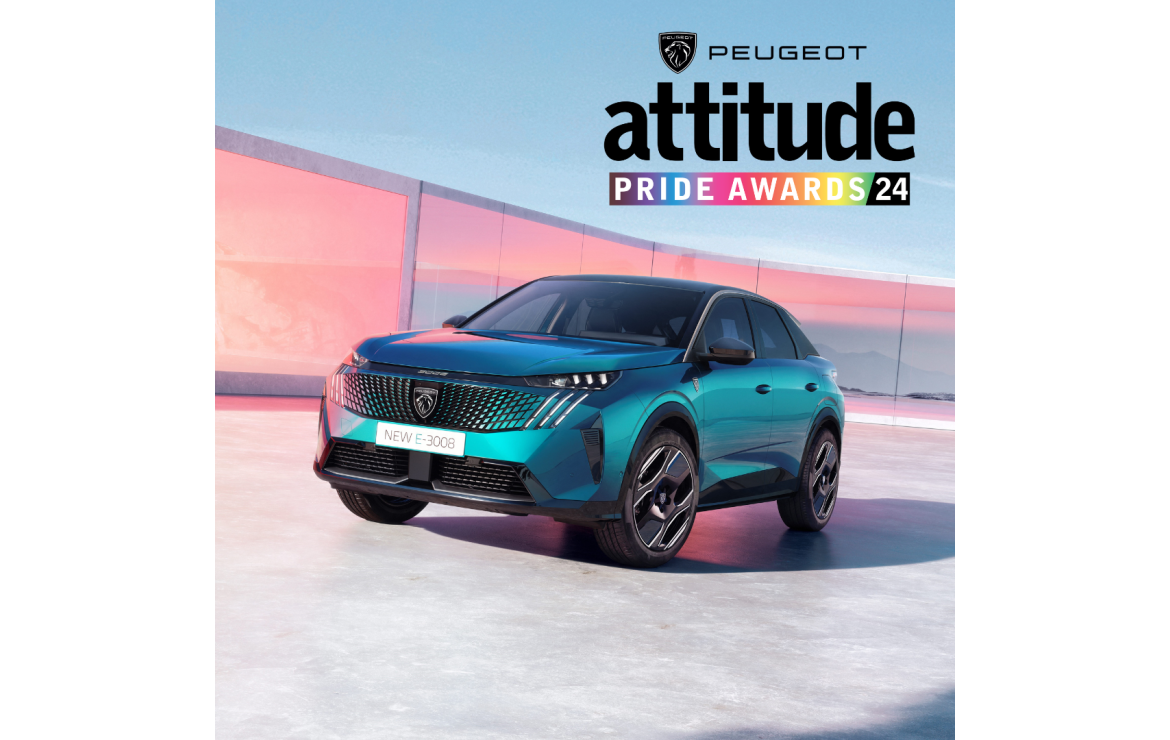Night driving is a source of worry for many people. New lighting technologies introduced by Ford are designed to make getting behind the wheel after dark a more comfortable and potentially safer experience.
For the all-new Ford Focus, the company is the first manufacturer to introduce technology that uses road signs and lane markings as the cue to adjust headlight beams that better illuminate the road ahead. This might be to widen the beam when approaching a roundabout so that drivers are able to see pedestrians and cyclists at the kerbside more easily.
Rather than depending on GPS mapping, which does not always reflect the latest road layout changes, the new system offers real-world warning of what lies ahead. By harnessing camera and lighting technologies, Ford’s new Adaptive Front Lighting System tracks lane markings so that it can direct headlamps into curves before the driver has even turned the wheel.
“The dream is that night driving need be no more difficult than driving in the day. Our latest lighting technologies are part of our plan to make that a reality,” said Michael Koherr, lighting research engineer, Ford of Europe. “Across Europe 15 per cent of road layouts change every year. Amazingly useful as GPS is, using signs to read the road offers the most up-to-date information you can get.”
The front facing camera on the Ford Focus already supports technologies that help drivers keep the vehicle centred in the lane, maintain a comfortable driving distance from vehicles ahead and warn drivers against driving the wrong way onto a motorway. Mounted on the inside of the windscreen, below the rear-view mirror, it can monitor road signs and markings up to 65 metres ahead, enabling the system’s dynamic bending function to come into play much sooner than if only reliant on steering inputs.

A Ford survey has shown that 81 per cent of drivers are scared to drive after dark. * In a separate poll of German drivers, when asked what they are afraid of when driving at night, 53 per cent said “not seeing a pedestrian or cyclist”, 43 per cent said “seeing obstacles too late”, and 23 per cent said “not seeing the direction of the road ahead”.
Experts say the risk of being in a fatal crash is three times higher at night. In the EU between 2006 and 2015, there was a proportional increase in cycling fatalities compared with other road users – 1 in 4 taking place at junctions. There is also an increasing number of roundabouts, the total number across 19 European countries rising by 16 per cent from 2016 to 2017 alone.
Further functions of the Adaptive Front Lighting System include preventing drivers from dazzling others on the road using the Glare-Free Highbeam function, lighting technology that removes the guilt of accidentally dazzling other drivers – and that helps you to see more of the road ahead. The technology avoids drivers having to dip their headlights by simply blocking those rays that would otherwise shine in the eyes of other road-users. Studies have shown that automated high-beam headlights are activated up to 10 times more than when drivers have to switch to high-beam themselves.
Among many other advanced lighting projects, Koherr and his team are now developing new spot lighting technology that uses an infra-red camera to locate and track people, cyclists and bigger animals up to 120 metres away.





